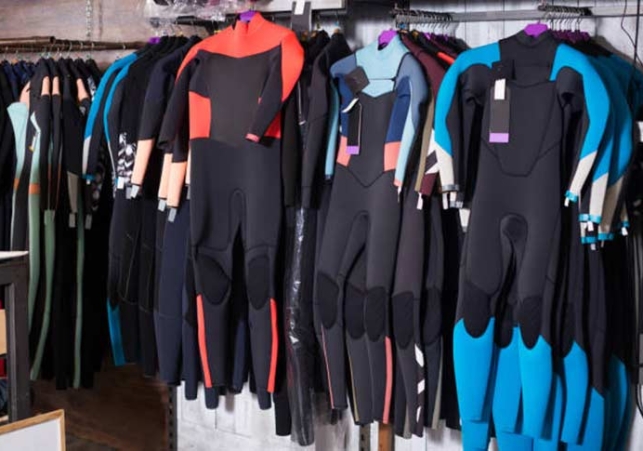Wetsuits: choosing the right thickness for surfing

Navigating the Waves: Choosing the Right Thickness for Your Surfing Wetsuit
Introduction: Surfing isn't just a sport; it's a way of life for many enthusiasts. Whether you're a seasoned pro or just starting out, one essential piece of gear you can't overlook is your wetsuit. The right wetsuit can make all the difference in your comfort and performance, especially when it comes to staying warm in cold waters. One crucial factor to consider when selecting a wetsuit is its thickness. In this guide, we'll explore how to choose the right thickness for your surfing adventures.
Understanding Wetsuit Thickness: Wetsuit thickness is measured in millimeters and refers to the neoprene material's thickness throughout the suit. The thickness varies depending on the part of the body it covers, with thicker panels providing more insulation. Common thicknesses range from 2mm to 6mm, with 3/2mm and 4/3mm being popular options for surfing in moderate to cold conditions.
Factors to Consider: Several factors influence the appropriate wetsuit thickness for your surfing needs:
-
Water Temperature: The primary determinant of wetsuit thickness is the water temperature of your surfing location. Colder water requires a thicker wetsuit to retain body heat, while warmer water allows for thinner options that provide greater flexibility.
-
Personal Tolerance to Cold: Individuals vary in their sensitivity to cold. Some may feel comfortable in thinner wetsuits even in cooler waters, while others may require thicker insulation for the same conditions.
-
Activity Level: Your activity level while surfing also affects your body's heat production. If you're paddling vigorously or spending extended periods in the water, you may opt for a thicker wetsuit to compensate for heat loss.
-
Wind and Weather Conditions: Wind chill can significantly impact perceived water temperature. Consider the wind and weather conditions at your surf spot when selecting wetsuit thickness.
Choosing the Right Thickness: To choose the right wetsuit thickness, follow these steps:
-
Determine Water Temperature: Research the average water temperature of your surfing destination during the season you plan to surf. Consult local surf reports or online resources for accurate information.
-
Consult Wetsuit Thickness Guides: Many surf brands provide wetsuit thickness guides based on water temperature ranges. These guides offer recommendations tailored to various conditions, helping you narrow down your options.
-
Consider Additional Insulation: In colder conditions, consider complementing your wetsuit with additional insulation such as neoprene hoods, gloves, and booties. These accessories can enhance warmth without sacrificing mobility.
-
Test Fit: Once you've selected a wetsuit thickness, ensure a proper fit by trying it on before purchasing. A snug but comfortable fit is essential to maximize warmth and prevent water entry.
-
Prioritize Flexibility: While thickness is crucial for insulation, balance it with flexibility to maintain mobility and agility in the water. Look for wetsuits with strategically placed stretch panels or seam construction for optimal performance.
-
Seek Expert Advice: If you're unsure about the appropriate wetsuit thickness for your needs, don't hesitate to seek advice from experienced surfers or professionals at your local surf shop. They can offer personalized recommendations based on their knowledge and expertise.
Conclusion: Selecting the right wetsuit thickness is essential for enjoying your surfing adventures comfortably and safely. By considering factors such as water temperature, personal tolerance to cold, activity level, and weather conditions, you can make an informed decision that meets your specific needs. Remember to prioritize both insulation and flexibility for maximum comfort and performance in the water. With the right wetsuit, you'll be ready to ride the waves year-round, regardless of the conditions.
